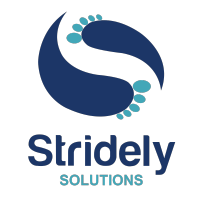SAP’s recent collaboration with Databricks through SAP Business Data Cloud signals a practical shift for enterprises dealing with fragmented data landscapes. For years, organizations have worked around siloed systems, delayed reporting, and limited AI integration, especially when it comes to extracting value from SAP data across the wider business.
This partnership addresses that gap directly. By enabling real-time access from the SAP Datasphere enterprise solution within the Databricks platform, it becomes possible to streamline integration, enhance data context, and activate analytics where they are needed most.
Consider a manufacturing business that brings together SAP S4/HANA inventory data and machine telemetry in Databricks. This combined view supports more accurate maintenance planning and smarter inventory decisions, without relying on delayed batch exports.
As the role of data continues to evolve, this collaboration offers a more integrated foundation for enterprises looking to move from fragmented operations to connected, intelligent decision-making.
The Challenge with Siloed Data in Modern Enterprises
Most companies are sitting on a goldmine of data. But the reality is, much of that data stays locked away in silos. Especially when it comes to SAP. While it holds core business operations like finance, supply chain, and HR, integrating SAP with other enterprise tools has always been tough.
Here’s what makes it so challenging:
Enterprises often use tools like Salesforce, ServiceNow, Kafka, and IoT platforms. These systems rarely communicate well with SAP or with each other.
Even after shifting to the cloud, data integration remains complex and messy.
Custom-built data pipelines are fragile. A small schema change can break everything, sending data teams into firefighting mode.
Batch-based processing means insights are hours or even days old, which makes real-time decision-making tough.
Running an ETL infrastructure across systems is expensive and usually requires multiple vendors.
Any new data source or logic change means weeks of rework, testing, and re-validation.
Data teams spend most of their time fixing broken connections instead of creating value.
Limited AI and Advanced Analytics Capabilities
SAP systems are solid when it comes to running operations. They are built to handle transactions, enforce business logic, and keep processes in check. But when businesses try to move beyond daily operations into predictive insights, machine learning, or real-time decision-making, they quickly hit a wall.
Even exporting the SAP Datasphere enterprise solution into external BI or analytics tools is far from smooth. One common issue is translation loss. The rich context that makes SAP powerful, like business hierarchies, calculated fields, and custom rules, often gets flattened into basic rows and columns. That means analysts lose the deeper meaning behind the data before they even start exploring it.
There is also the problem of access. SAP data can be hard to clean, label, and use in a meaningful way. Business analysts struggle to dig deeper or ask smarter questions because the data structure is too rigid. Data scientists hit dead ends trying to build models when they cannot get reliable or timely input. And leadership ends up questioning the ROI on AI investments when the models fail to deliver real results.
It is not a technology gap. It is a context gap. And that gap turns what could be valuable data into missed opportunities.
Break SAP Data Silos with SAP Datasphere and Databricks
Bringing the SAP Datasphere enterprise solution and Databricks together is reshaping how businesses approach analytics and AI. What used to be a complex, one-way flow of data is now turning into a more open and flexible setup. Instead of exporting SAP data, cleaning it, and trying to make sense of it somewhere else, teams can now work across both platforms without breaking the context or duplicating data.
At the heart of this shift is Databricks Delta Sharing. It gives users direct access to SAP data from within Databricks, without needing to copy or move it. That means no more duplicate datasets floating around. Business semantics and structure stay intact, making the data useful from day one.
This integration opens a lot:
It supports two-way connectivity, so updates flow back and forth
Cuts down data duplication and reduces errors
Simplifies governance with tools like Unity Catalog that span both SAP and non-SAP data
Reduces overhead costs by removing unnecessary data transfers
Builds trust with clear metadata, lineage, and access control in one view
Many organizations are still working with the SAP Datasphere enterprise solution as their main way to manage and interact with SAP data. It brings together tools for integration, modeling, cataloging, and virtualization under one umbrella. In the past, moving data from Datasphere to analytics platforms like Databricks needed heavy ETL pipelines. But that’s changing.
With the latest updates around Delta Sharing, teams can now collaborate across systems in real time.
What Businesses can gain from this collaboration?
The true power of combining the SAP Datasphere enterprise solution and Databricks lies in how it helps solve everyday business problems. From factories to finance desks, the ability to work with real-time, unified data is already making a visible difference.
Smarter Supply Chain Decisions in Manufacturing
Manufacturers are blending SAP supply chain data with external logistics feeds inside Databricks to gain real-time visibility across their operations. AI models use this combined data to predict equipment failures, optimize inventory, and help prevent unplanned downtime.
Faster, More Accurate Financial Forecasting
Finance teams no longer have to waste time collecting data manually from different tools. With automation handling consolidation, forecasts are more accurate, reporting is faster, and finance can shift from number crunching to strategy.
Predictive Demand Planning in Retail
Retailers are using machine learning in Databricks to forecast demand at the region, store, or even SKU level. This lets them fine-tune stock levels, adjust prices, and run promotions that actually align with market demand, helping reduce waste and boost margins.
This integration helps fix long-standing SAP pain points like siloed data, delayed decisions, and limited use of AI. Now, teams can trust the data they work with, access it faster, and use it in more meaningful ways.
Even better, all this progress does not require ripping out existing systems. Companies can keep using SAP tools like SAP Datasphere enterprise solution, Business Warehouse, or Analytics Cloud, while adding layers of intelligence and flexibility through Databricks. And with features like Joule AI copilot, teams can get suggestions and insights directly, without needing to know SQL or dive into code.
As data becomes central to how businesses grow, having this kind of integrated, AI-ready foundation is no longer a nice-to-have. It is becoming the standard for those who want to stay ahead.
What comes next?
The partnership between SAP and Databricks is still taking shape, but the path ahead is already clear. We are moving toward a world where data does not sit trapped in silos, waiting to be cleaned or exported.
What this creates is not just a smoother data architecture. It is a new way for enterprises to work. SAP continues to be the foundation for structured, trusted business data. Databricks brings the flexibility, speed, and intelligence layer that unlocks deeper insights, without forcing companies to change their entire tech stack.
SAP Datasphere enterprise solution and Databricks are becoming part of the same conversation. And the companies that make this connection early are the ones who will lead with better insights, faster responses, and stronger performance. If you are exploring ways to make this shift, Stridely can help you get started with SAP Datasphere services. Connect with us now to initiate the discussion.


